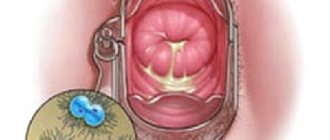Sexual diseases in women are serious pathologies, extremely dangerous with serious consequences in the absence of timely treatment. They are provoked by various microorganisms: viruses, bacteria, parasites, fungi. These are not only sexually transmitted diseases (gonorrhea, syphilis, etc.), but also infections of the genitourinary organs (chlamydia, candidiasis, etc.).
A feature of sexual diseases is the absence of clearly defined symptoms, which is why they are often called hidden. A woman may not even suspect that she is infected for a long time. Symptoms are determined by factors such as the type of infection, the degree of damage to the genitourinary system and the body as a whole. Therefore, the manifestation of symptoms of sexual diseases is very diverse.
Syphilis
The content of the article
Typically, syphilis in women appears 2-4 weeks after infection, sometimes this period is reduced to 9 days or extended to 6 months. Clinical manifestations are divided into 3 stages: primary, secondary and tertiary.
The disease begins with the formation of a syphilitic ulcer - a flat, compacted papule - at the site of penetration of the pathogen:
- on the mucous membrane of the vagina, labia;
- on the nipples of the mammary glands;
- on the oral mucosa;
- in the corners of the lips;
- on the skin of the face.
The formation is painless, so many women do not even suspect its appearance when it is located inside the vagina and hidden from view. For this reason, syphilis is often diagnosed only in the secondary period. Over time, the papule turns from a small formation measuring 1-3 mm into a round or oval red ulcer with a diameter of up to 2 cm.
It has a dense structure and is moist to the touch. In the center the ulcer is dirty yellow in color, which resembles a purulent mass.
Symptoms of primary syphilis:
- enlarged lymph nodes near the sites of syphilitic ulcers (pelvic, submandibular or axillary). This occurs 5-7 days after the formation of hard chancre. They are painless, mobile, and can reach the size of a walnut;
- general malaise of the body: increased body temperature, fever, pain in bones and joints, weakness;
- copious thick discharge with a pus-like consistency and an unpleasant odor, sometimes causing itching and burning;
- menstrual irregularity, characterized by unpleasant sensations during bleeding.
Only 3-4 weeks after the formation of syphilitic ulcers, the RW blood test shows a positive result.
Sexually transmitted diseases: infection and incubation period
All sexually transmitted diseases can be transmitted during sex.
Some of them have additional transmission routes.
The parenteral route is typical for:
- HIV;
- syphilis;
- viral hepatitis.
These infections can be contracted through blood.
Including when performing medical procedures.
Very often, drug addicts become infected by sharing syringes.
Any sexually transmitted diseases in women can be transmitted vertically.
That is, from mother to child.
Some infect the fetus in utero.
Other pathogens infect it during childbirth.
HIV can also be transmitted through breast milk.
A number of infections are transmitted through household contact.
These include:
- syphilis;
- gonorrhea;
- papillomavirus;
- molluscum contagiosum;
- herpes;
- ectoparasitic pathologies.
The route of infection can be either direct or indirect.
Indirect is sold through personal hygiene items, bed linen or underwear.
For example, pubic lice can be spread through bedding.
Syphilis - through razors or manicure accessories.
Gonococcal infection - through washcloths, towels.
Viral sexually transmitted diseases are most often transmitted through direct skin contact.
Sexual intercourse is not necessary for this.
After infection, symptoms of sexually transmitted diseases do not appear immediately in women.
An incubation period must pass - the time during which the pathogen increases its population.
It is different for different pathologies:
- short for gonorrhea, herpes, trichomoniasis - usually up to 1 week;
- medium duration - for chlamydia, ureaplasmosis, syphilis (3-4 weeks);
- long-term – for papillomavirus infection (3-8 months), molluscum contagiosum (1-3 months).
When symptoms of sexually transmitted diseases appear in women depends on a number of factors.
From the state of immunity, medication intake, bacterial or viral load at the source of infection at the time of infection.
Symptoms of secondary syphilis
The development of the secondary stage begins 2 months after the formation of compacted papules. The following symptoms may be observed:
- general malaise: headache, tinnitus, dizziness, poor appetite, high body temperature (up to 380C), pain in bones and joints, insomnia, nausea, vomiting, confusion. Speech disturbances and epileptic seizures may occur;
- dysfunction of internal organs (in 25% of cases): damage to the myocardium, liver, stomach, kidneys, membranes and blood vessels of the brain;
- loss of hair, eyelashes and eyebrows. Hair growth resumes after 1-2 months;
- the appearance of condylomas on the genitals and in the anal area;
- the occurrence of rashes on the skin, including the palms and soles of the feet, and mucous membranes.
The following types of rash are distinguished:
- syphilitic roseola - pink or pale pink flat spots from 0.5 to 1 cm in diameter. Localization – trunk and limbs;
- lenticular syphilide - copper-red round formations with a dense structure, rising above the skin;
- meliary syphilide - small dense formations with a diameter of up to 2-2.5 mm. They are brown in color and localized on the skin of the body. As a rule, such papules accumulate and form rings, arcs or plaques;
- coin-shaped syphilide - large red or brown formations with a diameter of up to 2.5 cm, slightly raised above the skin;
- weeping syphilide - eroded formations. They are moist, round in shape, and cause moderate itching. Localization – groin area and axillary folds;
- Condylomas lata are soft, pale pink formations that rise above the skin and are similar in appearance to papillomas. Localization – perineum and area around the mouth;
- pustular syphilide - small purulent formations with a yellowish crust at the end. Localization - on the skin of the trunk, limbs and face.
Usually after 3-5 weeks the rashes suddenly disappear, leaving no trace, even if no treatment was carried out. This period is called secondary latent syphilis. This stage lasts up to 5 years. During this time, relapses of the disease are observed, the rash appears again, but later also disappears on its own.
The course of the first wave of rashes is pronounced: multiple skin lesions, formations of a bright shade. Subsequently, darker elements are observed, often accumulating in groups.
Local treatment for sexually transmitted diseases in women
Local treatment becomes an addition to systemic therapy.
Applicable:
- antiseptic solutions;
- vaginal tablets;
- creams.
Only for candidiasis, local treatment can be used as the main one.
For all other infections, it only complements systemic antibiotic therapy.
Herpes infection can be treated using a cream containing 2.5 to 5% acyclovir.
For trichomoniasis, doctors often prescribe metronidazole in the form of vaginal tablets.
In the case of infectious urethritis caused by sexually transmitted diseases, the doctor instills the urethra with solutions of collargol or protargol.
For vaginitis and cervicitis, sitz baths with antiseptics are used.
Symptoms of tertiary syphilis
This type of disease is diagnosed extremely rarely. It develops 4-5 years after infection and is characterized by damage to the skin, mucous membranes, bones and internal organs. Over time it leads to death.
The symptoms are as follows:
- the appearance of brown or red-brown plaques on the skin. They have an uneven outline, rise above the skin, and are covered with ulcers and crusts. Localization – arms, back, face;
- formation in the subcutaneous tissue of an isolated gumma - a hard node the size of a walnut and an ulcer in the center. It usually occurs on the scalp, chest, face, and sometimes on the mucous membranes of the mouth, larynx and nose. In the latter case, tissue destruction and deformation of the palate occurs. Against this background, a number of complications develop:
- the nasal septum is destroyed and the nose is deformed;
- hoarseness and hoarseness appear;
- tongue mobility is impaired.
- damage to the nervous, vascular and skeletal systems, which manifests itself in the form of syphilitic meningitis, hydrocephalus, progressive paralysis;
- deformation and dysfunction of internal organs (liver, kidneys, lungs, heart).
Therapy
Antibacterial therapy
It is prescribed taking into account the identified sensitivity of the pathogens. Drugs from different groups are used.
Immunomodulatory agents
As a result of infectious processes, especially long-term ones, immune defense processes are disrupted. The absence of an immune response leads to a long course of the disease and the development of complications.
Enzymatic preparations
Used in complex treatment as a means of increasing the effectiveness of antibacterial therapy; in addition, they contribute to a faster resolution of inflammatory phenomena.
Multivitamins
In some cases, they are prescribed as adjuvant therapeutic drugs.
Local treatment
It involves exposure to the pathogen directly in the area of the entry gate of the infection, especially if local inflammatory manifestations are severe. This is expressed in the use of local antiseptics, lotions, etc.
The first signs of the disease
The first classic manifestation of gonorrhea is discharge. As a rule, they have a thick consistency, yellow or white color, an unpleasant odor, and cause itching. Against this background, women often mistake the disease for thrush or nonspecific colpitis, self-medicate and, thereby, erase the clinical picture.
Pain in the lower abdomen and when urinating may occur, and the urge to urinate may become more frequent. This is also often mistakenly blamed on cystitis or hypothermia.
Gonorrheal cervicitis
When the infection is localized in the vagina, the following symptoms are observed:
- yellowish-white discharge with an unpleasant odor;
- itching, burning and tickling sensation in the perineum and vagina;
- pain during intercourse.
In pregnant women, symptoms are more pronounced.
Inflammation of the appendages and uterus
When infection penetrates higher, the appendages and endometrium are affected. In this case it is observed:
- nagging or sharp cutting pain in the lower abdomen;
- purulent discharge mixed with blood;
- increase in body temperature to 38-390C;
- the appearance of signs of intoxication - weakness, malaise, nausea, vomiting, loss of appetite;
- pain during intercourse.
Urethritis, cystitis, pyelonephritis
When the urethra is infected, the symptoms are as follows:
- frequent urge to urinate;
- cutting pain and burning during urination;
- swelling and redness of the external opening of the urethra, its palpation is painful, purulent discharge from it is possible;
- the appearance of a false urge to urinate.
- Ascending infection affects the bladder and kidneys.
Gonorrheal proctitis
Gonorrheal inflammation of the rectum causes:
- itching and burning in the anal area;
- mucopurulent discharge;
- painful bowel movements;
- false urge to defecate;
- bloody streaks in stool and discharge;
- purulent plaque on the rectal mucosa;
- redness of the anus;
- filling the folds of the anus with pus.
Gonorrheal pharyngitis
Usually hidden under the guise of an ordinary sore throat with characteristic symptoms:
- sore throat (rarely intense);
- pain when swallowing;
- enlargement of the submandibular lymph nodes;
- increased body temperature;
- swelling and redness of the tonsils and palatine arches, the appearance of a yellowish-gray coating on them.
However, most often gonorrheal pharyngitis is asymptomatic or manifests itself only as a sore throat and hoarseness.
Gonorrheal stomatitis
It is characterized by the following symptoms:
- inflammation of the gums with the formation of purulent ulcers;
- enlargement of the submandibular lymph nodes.
Gonorrheal conjunctivitis
Infection of the mucous membrane of the eyes causes vivid symptoms:
- swelling of the eyelids, which are literally glued together with purulent discharge;
- redness of the mucous membrane of the eyes;
- in advanced cases - clouding of the cornea and blurred vision.
Chronic gonorrhea
2 months after infection, gonorrhea takes on a chronic form, the clinical picture of which is almost erased. Asymptomatic periods of the disease are replaced by relapses with mild symptoms.
The trigger for an exacerbation can be hypothermia, the onset of menstruation, or termination of pregnancy. Symptoms include discharge and pain in the lumbar region, sometimes spasms can radiate to the legs or abdomen.
Chronic inflammation of the vaginal mucosa due to gonorrhea leads to menstrual irregularities. Bleeding is observed between menstruation, and the cycle itself becomes long and with heavy bleeding. As the disease progresses, adhesions develop in the pelvis.
A distinctive symptom of gonorrhea at this stage is the “morning drop” syndrome: when waking up, a woman may find a cloudy purulent drop at the opening of the urethra.
If left untreated, chronic gonorrhea can lead to infertility.
Trichomoniasis
The incubation period of the disease is 4-14 days, the first signs appear approximately 5 days after infection. Symptoms of trichomoniasis depend on the site of infection (vagina, urethra, and cervix).
Symptoms of “primary” trichomoniasis:
- copious discharge of leucorrhoea from the vagina. They are usually yellowish or greenish in color (may turn gray-green with blood streaks), foaming, and having an unpleasant odor. When combined with gardnerellosis (bacterial vaginosis), a “fishy” odor appears;
- the vaginal mucosa is covered with purulent discharge;
- vaginal discharge upon contact with the skin causes ulcers, irritations and abrasions to appear on it;
- discomfort and pain during sexual intercourse;
- burning and severe itching in the vagina, swelling and redness;
- intermenstrual bleeding from the vagina;
- when the urethra is affected by an infection, frequent urination, burning and cutting pain are observed;
- increase in body temperature to 37.50C;
- general deterioration of health, sleep disturbance;
- rarely – pain in the lower abdomen.
GONORRHOEA is a well-known enemy!
Gonorrhea is a well-studied bacterium, which is generally good for diagnosis, prevention, and treatment. The only route of infection is sexual contact.
Symptoms
The first signs appear already on the 3-5th day, but their appearance may be delayed for 2-3 weeks. The symptoms of the disease are still the same – severe urethritis.
Treatment
Gonorrhea should be treated without fail. Recently, the bacterium cannot always be detected, since it lives not only in the urethra, but also in other organs located in close proximity, for example, in the prostate gland. Gonorrhea often penetrates into blood cells - into leukocytes, and in each new habitat it still continues to multiply.
How to detect gonorrhea?
The simplest diagnostic method is smear microscopy, which allows us to draw the appropriate conclusions.
How to treat?
Therapy is carried out exclusively with antibiotics, but only a doctor should prescribe them. The fact is that the gonorrhea bacterium can degenerate into the L-form, and then it is almost impossible to get rid of the infection. That is why the issue of timely treatment is especially acute, and if you know about the likelihood of the disease, it is better to get tested and not wait for negative consequences.
Chlamydia
Chlamydia is an insidious disease, since in 6% of cases it is asymptomatic, which does not mean safety. The incubation period is 2-4 weeks, after which symptoms may appear:
- itching and burning on the genital mucosa;
- white or yellowish mucopurulent discharge with a sharp, unpleasant odor;
- increase in body temperature to 37-37.50C;
- minor or intense pain in the lower abdomen, in the lumbar and groin areas, intensifying before menstruation, with sudden movements and physical activity;
- when the mucous membrane of the urethral canal is infected: frequent urination, pain, itching and burning during urination, cloudy urine;
- discomfort and pain during sexual intercourse;
- slight bleeding during or after sexual intercourse;
- erosion of the cervix, small ulcerations on it and spotting;
- in advanced cases - a violation of the endocrine function of the ovaries and the ovarian-menstrual cycle, as a result of which menstruation becomes irregular, painful, rare, abundant or, conversely, scanty.
Often, with a long asymptomatic course, the only sign of the disease is infertility.
Methods of transmission of STIs
STIs are spread through sexual contact—vaginal, oral, or anal. The gender of a person does not matter - they can go from a man to a woman, from a woman to a man, from a man to another man, or from a woman to another woman.
Many sexually transmitted infections can be spread through any contact between the genitals, mouth and anus, even if there is no penetration. For example, genital herpes is transmitted through direct skin-to-skin contact - microdamages on its surface are enough for infection.
Some STIs are transmitted in other ways. For example, HIV and hepatitis B are transmitted through sharing of injection needles and blood transfusions.
The use of barrier methods of contraception does not always guarantee safety. When using condoms for safe sex, it is important to follow the instructions on the package. Proper use of condoms makes them more effective. The following precautions must be observed:
- check the expiration date and integrity of the packaging;
- wear a condom before sex, not during it;
- use lubricant during sexual intercourse with a condom;
- remove and dispose of condoms correctly;
- never remove a condom and try to put it on again;
- never reuse a condom.
Actinomycosis
This disease is quite rare. At the initial stage, the symptoms of actinomycosis are mild and often resemble an inflammatory process.
Observed:
- increase in body temperature up to 400C;
- sharp or aching pain in the lower abdomen and iliac region.
As the disease progresses, dense, painless infiltrates form. All pelvic organs are involved in this process, deformation changes occur in the uterus, appendages, intestines, rectum with hyperemia of the mucous membrane and smoothness of the vascular pattern. Large dense infiltrates can compress the intestines and disrupt the functions of the urinary tract.
At the next stage of the disease the following is observed:
- the formation of fistulas with purulent discharge, spreading to the retroperitoneal tissue, bladder, thigh and rectum. In this case, the secreted pus has no odor;
- disturbances of menstrual (acyclic bleeding, absence of menstruation) and reproductive function.
In the chronic form of the disease, adhesions and scars appear.
AIDS
AIDS is the final stage of infection with the human immunodeficiency virus (HIV). At the initial stage, the disease has no symptoms and can remain hidden for up to 10 years. Only at a late stage does AIDS cause an outbreak of diseases such as pneumonia, tuberculosis, and cancer.
The most common cause of infection is sexual contact. Infection can also occur through blood (for example, when using unsterile medical instruments) and during childbirth, when the mother infects her newborn baby.
People who have sex with multiple partners should be tested regularly for HIV, as the absence of symptoms can lead to unwitting infection of others.
Mycoplasmosis
In 10-20% of cases, this disease is asymptomatic until it is activated by various stress factors: abortion, hypothermia, nervous strain, etc. The incubation period ranges from 5 days to 2 months, with the first signs appearing approximately 7-14 days after infection.
Mycoplasmosis does not have clearly defined specific symptoms; they depend on the clinical form of the disease. The pathology can occur in the form of vulvovaginitis, cervicitis, endometritis, salpingitis, oophoritis, adnexitis, urethritis, cystitis, pyelonephritis.
The following clinical picture is observed:
- if the vagina and cervix are affected: yellow or gray mucous discharge, itching and burning during urination, discomfort and pain during or after sexual intercourse;
- with damage to the uterus and appendages: nagging pain in the lower abdomen and lower back, intermenstrual bleeding, menstrual irregularities;
- when the urethra is infected: frequent urination, pain and burning during it, false urge to urinate, increased body temperature up to 38.50C, cutting pain in the lower abdomen, pain in the lower back;
- with intestinal damage: pain during defecation, false urge to defecate, sometimes - an admixture of mucus in the stool;
- if the respiratory system is affected (does not apply to sexual diseases, but can become a complication of genital mycoplasmosis): sore throat, nasal congestion, inflammation of the ligaments, bronchitis, fever, weakness, sweating, long-lasting cough with sputum.
Basic concepts and classification
Traditionally, sexually transmitted diseases include the following conditions:
- trichomoniasis;
- gonorrhea;
- chlamydia;
- syphilis;
- HPV infection;
- genital herpes;
- CMV infection;
- mycoplasma infection caused by Mycoplasma genitalium.
The photo shows a rash due to candidiasis
External manifestations of ureaplasmosis
Infection caused by Mycoplasma hominis
A special position is occupied by urogenital candidiasis, ureaplasma and mycoplasma infections caused by Mycoplasma hominis. The causative agents of these diseases are present in the body of almost every person and belong to the normal microflora. They can be transmitted sexually, but are not considered an STI. Despite this, these infections are usually studied together with classic STDs, since they often accompany chlamydia, trichomoniasis and other infectious diseases.
Rare sexually transmitted diseases:
- inguinal granuloma;
- lymphogranuloma venereum;
- chancroid;
- molluscum contagiosum;
- phthiriasis (a disease caused by pubic louse).
Ureaplasmosis
In 70-80% of cases, there are no clinical manifestations of this disease, therefore, as a rule, it is detected during the diagnosis of another disease. Ureaplasmosis has no specific symptoms and during periods of exacerbation it manifests itself as an inflammatory process. The incubation period can last from several days to several months.
The symptoms of the disease are as follows:
- urethritis (inflammation of the urethra): pain and burning in the urethral area, while the pain increases sharply when urinating, inflammation of the mucous membrane of the external urethral os, frequent urination;
- mucous discharge from the vagina and urethra. They are usually quite scanty, odorless and colorless. If the inflammatory process has already started, the discharge may become greenish or yellowish and take on a sharp, unpleasant odor;
- painful and uncomfortable sensations during and after sexual intercourse;
- bloody discharge from the vagina after sexual intercourse;
- aching or nagging pain in the lower abdomen. If the disease has caused complications in the appendages and uterus - pain in the lower abdomen of a cutting nature;
- in acute form: increase in body temperature to 37-37.50C; weakness, fatigue, decreased performance;
- in the chronic form: infertility, spontaneous miscarriage, pathological course of pregnancy, treatment-resistant urethritis, vaginitis, endocervicitis, adnexitis.
If the infection occurs during oral sex, ureaplasmosis can be hidden under the “mask” of a sore throat: plaque appears on the tonsils (tonsils), painful sensations in the throat, it is difficult and painful to swallow, etc.
Diagnosis of STIs
There are quite a lot of pathogens that are included in the group of STIs. Modern medicine offers many diagnostic methods that can be used to detect them and prescribe an effective treatment regimen. Conventionally, they can be divided into several groups:
- microscopic methods;
- blood tests;
- cultural methods or cultures;
- DNA diagnostics.
After detecting symptoms that indicate the presence of a sexually transmitted infection, you should immediately consult a doctor. Women should make an appointment with a gynecologist, male patients with a urologist. If there are obvious signs of a sexually transmitted disease (chancres or other rashes on the genitals), you need to go to a venereologist.
Despite the extensive choice of diagnostic methods, an accurate laboratory method does not yet exist. If you suspect an STI, you cannot use just one method; most often they are used in combination for the most reliable result. Diagnosis often takes a lot of time on the part of the patient.
The first thing a person who is concerned about the symptoms of a sexually transmitted infection should do is take a smear for microflora. This is a standard procedure, which is also performed during a routine examination by a gynecologist or urologist. In men, a smear is taken from the urethra, in women - from the vagina and urethra.
The simplest methods also include bacterial culture. The doctor takes a certain amount of genital secretions for analysis. The taken material is placed in a nutrient medium, which promotes the rapid proliferation of bacteria: both “correct” and pathogenic.
In addition to microbiological analysis, if necessary, an enzyme-linked immunosorbent assay (ELISA) is prescribed. With its help, you can identify antibodies with which the body fights STIs. For some diseases that affect the entire body (syphilis, HIV), a blood test is performed (HIV determination and Wasserman reaction).
The most accurate diagnostic method is PCR (polymerase chain reaction). It allows you to identify hidden diseases characterized by an asymptomatic course. The infection is detected using DNA testing. This method is effective in cases of suspected HPV and other diseases that can remain dormant in the body for a long time.
In addition to examination by highly specialized specialists, patients with STIs may sometimes need the help of other doctors. Some diseases affect not only the genitourinary system, but also other organs. This applies to infections such as:
- HIV;
- syphilis;
- HPV, herpes, etc.
They can affect vision, joints, skin, circulatory system, and anus. Depending on the type of complications, it is necessary to contact an immunologist, proctologist, dermatologist, infectious disease specialist and other specialists.
It is important to remember that in the case of an STI, only a doctor can make a diagnosis. Many diseases have almost identical symptoms, so self-medication can only aggravate the situation and lead to dangerous complications.
Gardnerellosis
The incubation period of the disease is 4-10 days. The first signs of infection are:
- the appearance of a “rotten fish” smell from the vagina. This specific odor is caused by the breakdown of waste products of the infection;
- slight whitish-gray or yellowish vaginal discharge.
- With the development of the disease, the clinical picture is supplemented by symptoms:
- feeling of irritation, itching and burning in the vagina;
- frequent urination;
- pain in the lower abdomen, which indicates an increase in the inflammatory process;
- increasing discomfort and pain during sexual intercourse;
- creamy discharge flowing down the walls of the vagina into the perineum.
After sexual intercourse, the symptoms become more pronounced, since sperm, having an alkaline reaction, serves as a favorable environment for the proliferation of gardnerella bacteria.
The most common STDs in men
All sexually transmitted diseases can be divided into five groups:
- Viral infections. This group of STDs includes hepatitis B, human papillomavirus, HIV, and genital herpes. It seems that HPV (human papillomavirus) is the most harmless on this list. But that's not true. There are many varieties of this virus. Some of them can cause cancer in both men and women.
- Bacterial infections. These include syphilis, mycoplasmosis, chlamydia, ureaplasmosis, gonorrhea and some other diseases. Today, many of them are successfully treated with medications. But if the therapy was not chosen correctly or the disease turned out to be advanced, the person will have to face serious problems.
- Fungal infections. One of the most common diseases belonging to this group is candidiasis or thrush. The fungus manifests itself with decreased immunity, hormonal imbalances, high sugar consumption, poor hygiene, and after taking certain medications. If symptoms of a fungal infection appear, immediate action must be taken. Otherwise, you will infect your partner, and the disease will progress and lead to the development of complications.
- Protozoal infections. A striking example is trichomoniasis.
- Parasitic diseases (scabies, lice pubis).
Almost everyone is at risk of contracting an STD by not using a condom during sexual intercourse. Moreover, you can become infected in marriage, even when both partners are faithful to each other. The main risk group for contracting sexually transmitted diseases are teenagers and young adults. The second risk group is men from 40 to 50 years old, when the second wave of sexual activity is observed.
Candidiasis (thrush)
The first signs of candidiasis (thrush) appear already 4-5 days after infection or activation of the vagina’s own opportunistic microflora. The clinical picture of this disease is as follows:
- pain and discomfort during sexual intercourse: the vaginal mucosa is destroyed by Candida fungi, becoming inflamed and painful;
- burning and itching in the genital area. These symptoms are worse after urinating or washing;
- swelling and redness of the genitals;
- white coating and copious “curdled” discharge with an unpleasant sour odor. The discharge is mucus with many white dense lumps (a type of curdled mass or curdled milk);
- pain and discomfort when urinating;
- the appearance of a rash on the labia. With thrush, the formation of small burgundy pimples-vesicles with liquid contents inside - vesicles - is often observed. After 1-2 days they burst and small erosions and crusts form in their place;
- general deterioration of condition. The listed symptoms cause nervousness, attacks of bad mood, and sleep disturbances (the burning sensation intensifies at night). Their manifestation is especially intensified after a long walk and during menstruation.
MYCOPLASMOSIS AND UREAPLASMOSIS - constant finalists of each new season
Both infections belong to the same huge family of mycoplasmas, which is considered opportunistic due to the fact that these cells partially resemble healthy human cellular structures. At the same time, the diseases mycoplasmosis and ureaplasmosis are insidious, since sitting quietly in the body, they continue to do their dirty work, causing chronic prostatitis, infertility and other negative consequences.
Symptoms
The main signs are the same symptoms of urethritis. The peculiarity of these diseases is that they can be asymptomatic, therefore, in order to exclude this disease, it is necessary to undergo tests (PCR - diagnostics).
How to treat?
Antibiotic therapy is the main method of treatment, but it is not always effective, which is due to the very ability of mycoplasma and ureaplasma to adapt to natural human cells. It is much easier not to treat these diseases, but to exclude the possibility of infection.
Human papillomavirus (HPV)
The forms of manifestation of the papilloma virus in women are different: genital warts, flat warts, dysplasia, bowenoid papulosis, precancerous condition and cervical cancer. Usually, papillomavirus occurs latently and is detected during a routine examination. Pathological changes in the skin are usually detected 1–6 months after infection.
The incubation period and the main manifestations of symptoms depend on the type of papillomavirus, its quantity (viral load), immune activity and concomitant diseases (sexually transmitted infections).
The following are the main symptoms of HPV in women:
| Symptom | Condylomas acuminata | Dysplasia | Cervical cancer |
| Pain in the lower back, lower limbs and pelvis | No | No | Eat |
| Intermenstrual bleeding | No | Eat | Eat |
| Minor bleeding after intercourse | Eat | Eat | Eat |
| Discharge | Transparent or yellowish-green color with an unpleasant odor | With an unpleasant odor | With an unpleasant odor |
| Itching and burning in the genital area | Eat | Eat | Eat |
| Pain during and after intercourse | Eat | Eat | Eat |
The clinical picture can be supplemented by general signs:
- chronic fatigue;
- periodic weight loss;
- decreased appetite;
- swelling of the lower extremities.
Smears for sexually transmitted diseases in women
To diagnose this group of pathologies, examination is not enough.
Diagnoses are not made based on symptoms.
Microbiological diagnostics is needed.
Before starting treatment, you need to know exactly what pathogen caused the inflammation.
For this, smears are taken from the urogenital tract.
They can be taken from:
- urethra;
- vagina;
- rash elements;
- cervix.
According to indications, they are taken from the mouth and anus.
Because some infections can manifest as pharyngitis and proctitis.
Smears are examined under a microscope.
In this way, trichomoniasis, candidiasis, and, less commonly, gonococcal infection can be detected.
Signs of inflammation are detected by an increase in the number of leukocytes.
PCR is carried out for all common sexually transmitted infections.
There is one sexually transmitted disease that women are not routinely tested for, even if the symptoms are obvious.
This is due to the fact that the majority have co-infections.
For example, if there are obvious symptoms of herpes, you need to examine not only for the presence of this virus.
But also for trichomoniasis, chlamydia, gonorrhea, syphilis.
Because these infections are transmitted through the same routes.
In 50% of women, two or more pathogens are detected.
15% of women have 3 or more pathogens at once.
And it doesn’t matter how many sexual partners she had over the past year.
If a patient contracted one infection, she could have contracted several more sexually transmitted diseases from the same man.
The smear can be examined using a bacteriological method.
It is sown on a nutrient medium, followed by observation of the growth of colonies.
The technique allows us to assess the sensitivity of isolated bacteria to antibacterial drugs.
Herpes infection (cytomegalovirus, herpes simplex)
Primary herpes
Primary herpes occurs in 5 periods:
- Incubation . Lasts from 2 to 14 days, there are no symptoms;
- Prodromal . General and local manifestations increase: malaise, muscle pain, accompanied by swelling and weakness, increased body temperature to 37-37.50C, possible chills, enlarged inguinal lymph nodes. There is also itching and burning in the genital area, leucorrhoea, painful urination with pain and burning;
- Rash period . The duration of the period is from 7 to 10 days. The appearance on the vaginal mucosa of rashes in the form of bubbles with a diameter of 2-3 mm with liquid contents - vesicles. They accumulate in groups, forming a painful, itchy area. Periodically, the number of rashes increases. General symptoms are mild, local manifestations in the form of itching, burning, swelling and pain persist. They lead to nervousness, attacks of bad mood, sleep disturbances;
- Stabilization period . Lasts about 2-3 weeks. At this stage, the vesicles become cloudy, open and form weeping erosions that are prone to fusion. Sometimes ulcers up to 1 mm deep appear in their place. The affected areas are painful, purulent plaque is possible, there is no bleeding;
- Healing period . Lasts about 2-3 weeks. Local and general symptoms subside. The affected areas dry out, a thin crust forms, under which a new epithelium forms. After a while, the crust disappears, and in its place there is redness, which goes away after complete healing.
The rash is usually localized near the external opening of the urethra, at the vaginal opening, on the labia, on the cervix, in the anus or buttocks.
The total duration of primary herpes is 5-7 weeks.
Recurrent herpes
Recurrent herpes can occur in typical and atypical forms. The typical form is characterized by the same symptoms as primary herpes. Only the total duration is 7-10 days.
The atypical form can be presented in various ways:
| Option | Predominant symptoms |
| Hydropic | Diffuse swelling and redness of the vulva |
| Itchy | The appearance of deep, poorly healing cracks, severe itching of the vaginal mucosa |
| Abortive | Absence of some stages of the disease, regression of rashes in 2-3 days |
| Subclinical | Presence of microsymptoms (itching, superficial cracks) or absence of clinical manifestations |
What are inflammatory diseases of the genital organs and their types
Inflammation is a process that is a natural reaction of the body to an irritant, mechanical damage or penetration of pathogenic microorganisms into tissues. It is aimed at destroying the irritating factor, eliminating the consequences of its negative impact on tissues and restoring their integrity. This is accompanied by redness of the tissues, swelling of varying degrees, pain, dysfunction and sometimes increased temperature.
Infectious processes today are of leading importance in the development of inflammatory processes of the external and internal genital organs.
In the latter case, when the inflammatory disease is a consequence of an infection, they are divided into:
- nonspecific - provoked by opportunistic microflora, which include streptococci, staphylococci, enterococci, Klebsiella, Escherichia coli, fungi of the genus Candida, etc.;
- specific - caused by infection with absolute pathogens, in particular gonococci, trichomonas, chlamydia, mycoplasma.
Thus, if the main route of infection with absolute pathogens is unprotected sexual intercourse, then nonspecific inflammatory diseases can also occur against the background of their absence due to decreased immunity, non-compliance with personal hygiene rules, disturbance of vaginal pH as a result of douching and other procedures, etc. Mixed infections are detected.
Expert Opinion of a Doctor
Inflammatory diseases of the uterine appendages are a complex and practically important problem associated with serious medical, social and economic losses. This pathology can lead to disruption, first of all, of the functions of both the reproductive and other organs and systems of the female body. In the structure of gynecological diseases, inflammatory processes of the female genital organs occupy a leading place, accounting for 65% of all pathologies of the reproductive system in women.
Women's inflammatory diseases
Experience:
Ask a Question
In this case, the female reproductive system is formed by the external genitalia and internal:
- vulva - the outer part of the genital organs, formed by the labia majora and minora and the vestibule of the vagina;
- vagina - a tubular organ lined with mucous membrane into which the cervix opens;
- cervix - one end opens into the vagina, and the other into the uterine cavity, the cervical canal passes inside it;
- the uterus is a hollow muscular organ that ensures pregnancy;
- ovaries - paired endocrine organs connected to the uterus through the fallopian tubes, where already at the time of the birth of a girl the entire supply of follicles with eggs is present;
- Fallopian (uterine) tubes are hollow tubular formations that ensure the passage of a mature egg at the time of ovulation from the ovary into the uterine cavity.
In the area of the labia, directly next to the vagina, there are paired glands called Bartholin's glands. They provide the production of secretions to moisturize the vaginal opening.
Each of these organs, when favorable conditions are created, can become a victim of inflammation. On the basis of which all gynecological inflammatory diseases are divided into those affecting the lower and upper parts of the genital organs. The first include:
- vulvitis;
- bartholinitis;
- colpitis;
- endocervicitis;
- cervicitis.
Among the inflammatory pathologies of the upper genital organs there are:
- endomyometritis;
- salpingo-oophoritis;
- pelvioperitonitis;
- parametritis.
All of them can occur in an acute form, when symptoms arise suddenly, quickly intensify and are generally pronounced, or in a chronic form, when signs of the disease of varying severity are observed again and again with a certain frequency. Also, gynecological inflammatory diseases can occur in a subacute form, which is characterized by a blurred clinical picture of the pathology.
Lymphogranuloma venereum
The incubation period of the disease ranges from several days to 4 months. The development of the pathological process occurs in 3 stages.
Symptoms at stage 1:
- the appearance of bubbles at the site of infection;
- after a few days, the rash turns into purulent round ulcers with a diameter of 1-3 cm;
- pathological vaginal discharge;
- enlarged pelvic lymph nodes.
Foci of infection can appear not only on the vaginal mucosa, but also on the wall of the rectum (if infected through anal sex), and in the oral cavity (if infected through oral sex). After 2 places after infection, the signs of inflammation intensify: stage 2 of the disease begins.
The following symptoms are observed:
- enlargement of the pelvic lymph nodes with greater intensity and inflammation of the surrounding tissues, their soreness;
- the occurrence of fistulas inside an extensive tumor with purulent discharge;
- the development of adhesions, which causes a violation of the outflow of lymph, and the genitals swell;
- pain when urinating and during sexual intercourse;
- general weakness, lethargy, drowsiness;
- rapid loss of body weight;
- loss of appetite;
- pain and aches in joints and muscles (evidence of the spread of infection throughout the body);
- sometimes - the appearance of eczema, urticaria and other lesions on the skin.
When the rectum is infected, the pain spreads to the lower back, and a small lump is felt near the anus. There is a disturbance in the process of defecation: frequent constipation, pain and burning during bowel movements.
In the absence of adequate therapy, after 1.5-2 years the disease enters stage 3, characterized by a number of complications. It is characterized by the following clinical picture:
- the occurrence of genitoanorectal syndrome (inflammation of the perineum, perianal region, rectum and surrounding tissue) at the site of inflammatory and adhesive phenomena;
- nagging pain and purulent discharge from the anus;
- erosion, pain and bleeding in the lower rectum;
- the appearance of ulcers, fistulas and abscesses in the anorectal region and perineum;
- deformation of the labia up to elephantiasis, narrowing of the vaginal opening.
With the development of necrotic phenomena in the inflamed lymph nodes, a general deterioration of the condition (chills, fever, cold sweat, nausea, vomiting, fever) may be observed at the 2nd stage and continue into the 3rd stage. The lymphatic system, which has been attacked by an infection, spreads it throughout the body, causing damage to the spleen, liver, venous inflammation, eye diseases, and the development of arthritis.
If you find an error, please select a piece of text and press Ctrl+Enter
What to do?
When the first signs of a sexually transmitted disease appear, you must:
- Avoid sexual contact to prevent transmission of infection.
- Contact a urologist or dermatovenerologist.
- Get a full examination from a specialist.
Since the doctor cannot determine the disease by eye, he prescribes the following tests:
- urethral smear for microscopic examination;
- bacteriological culture of discharge;
- PCR or ELISA for major STIs.
If damage to the pelvic organs is suspected, an ultrasound scan is prescribed. Further tactics will depend on the results obtained.









